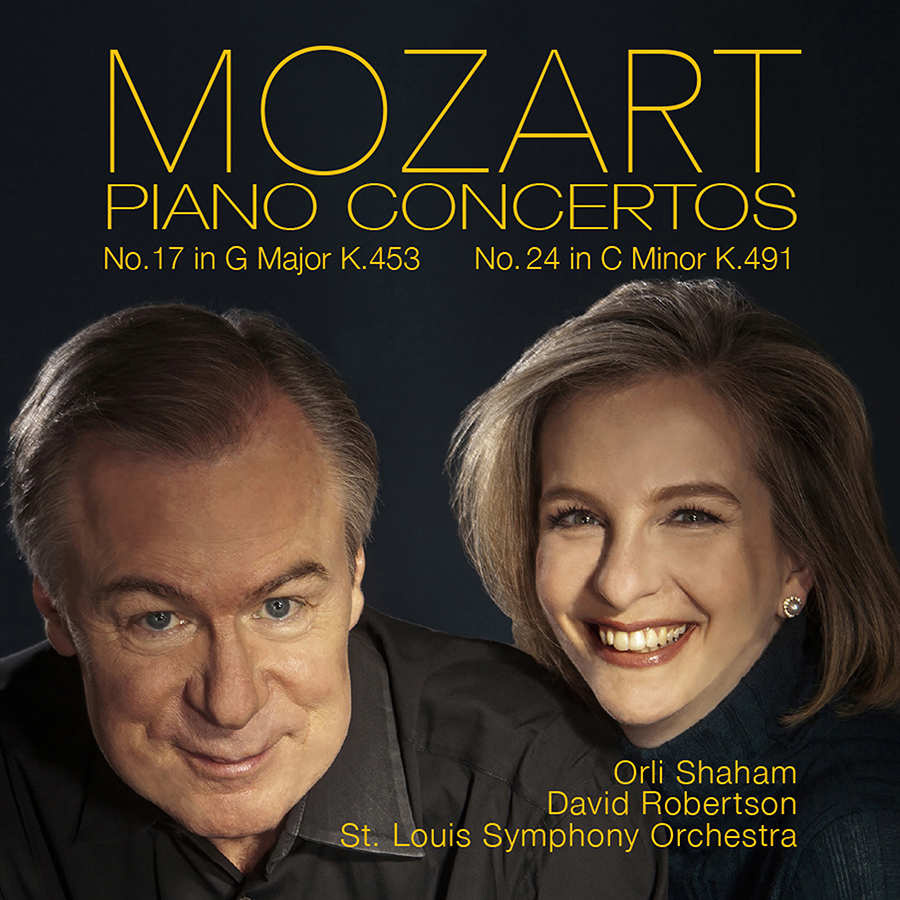
Classics Today reviews Orli Shaham "Mozart Concertos"
December 17, 2019
By Jed Distler
Just about everything in this husband-and-wife Mozart concerto collaboration is ideal. For starters, the microphone placement captures Orli Shaham’s beautifully regulated Steinway and the St. Louis Symphony Orchestra in perfect balance, where both full-bodied tuttis and fleeting solo-instrument details clearly emerge. Secondly, and more importantly, the chamber-like sonic perspective extends to the music making.
Shaham’s enlivening inflections in the G major K. 453 concerto’s first movement interact with the woodwinds with fetching conversational flow. While Robertson minimizes string vibrato in the Andante, he avoids eliciting the kind of threadbare tone and mincing dynamic exaggerations that are stock-in-trade mannerisms of the period performance movement. Both conductor and pianist happily render the finale variations in a fluid alla breve tempo, as opposed to the relatively regimented four-beats-to-a-bar feeling evoked in the Robert Casadesus/George Szell stereo traversal.
Like Casadesus, Shaham favors Saint-Säens’ flashy yet effective cadenza for the C minor K. 491’s first movement, but plays it with more authority and force. The Larghetto conveys an appropriately tender and lyrical mood while showcasing Shaham’s masterful finger legato. Here one might argue that her phrasing is controlled and calibrated to the point of being foursquare, in contrast to the shapely variety that Alfred Brendel brought to his reference recording with Charles Mackerras. Yet Shaham more than compensates in the finale, where variety of tone and expression most definitely characterizes her detaché articulation: For example, note the uncommon urgency of the first variation’s descending chromatic patterns, or the tension informing Shaham’s ever-so-slight elongations in the coda.
The booklet contains an extensive discussion with Shaham, Robertson, and scholar Elaine Sisman that delves into fascinating performance-related issues and historical perspectives. Strongly recommended.